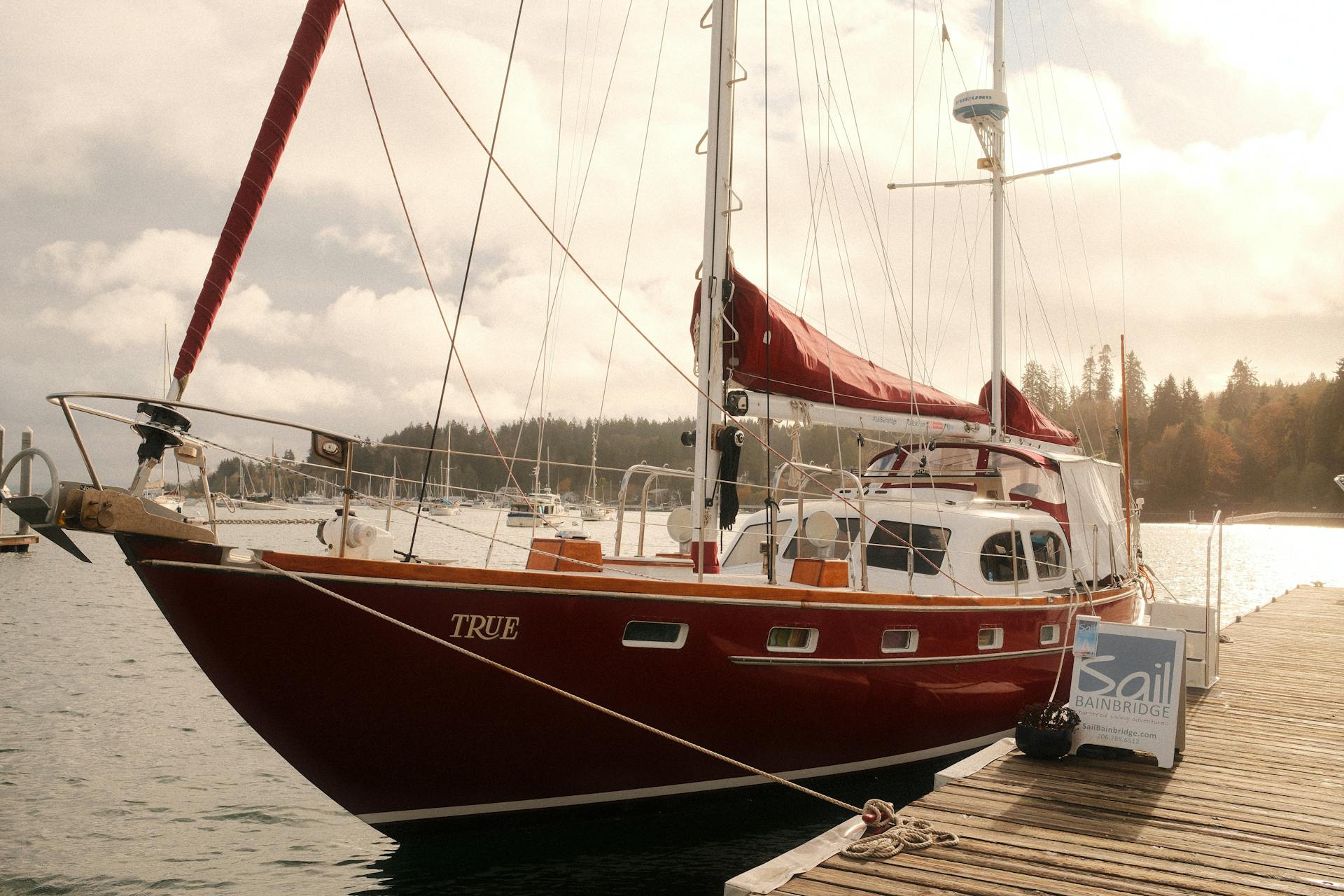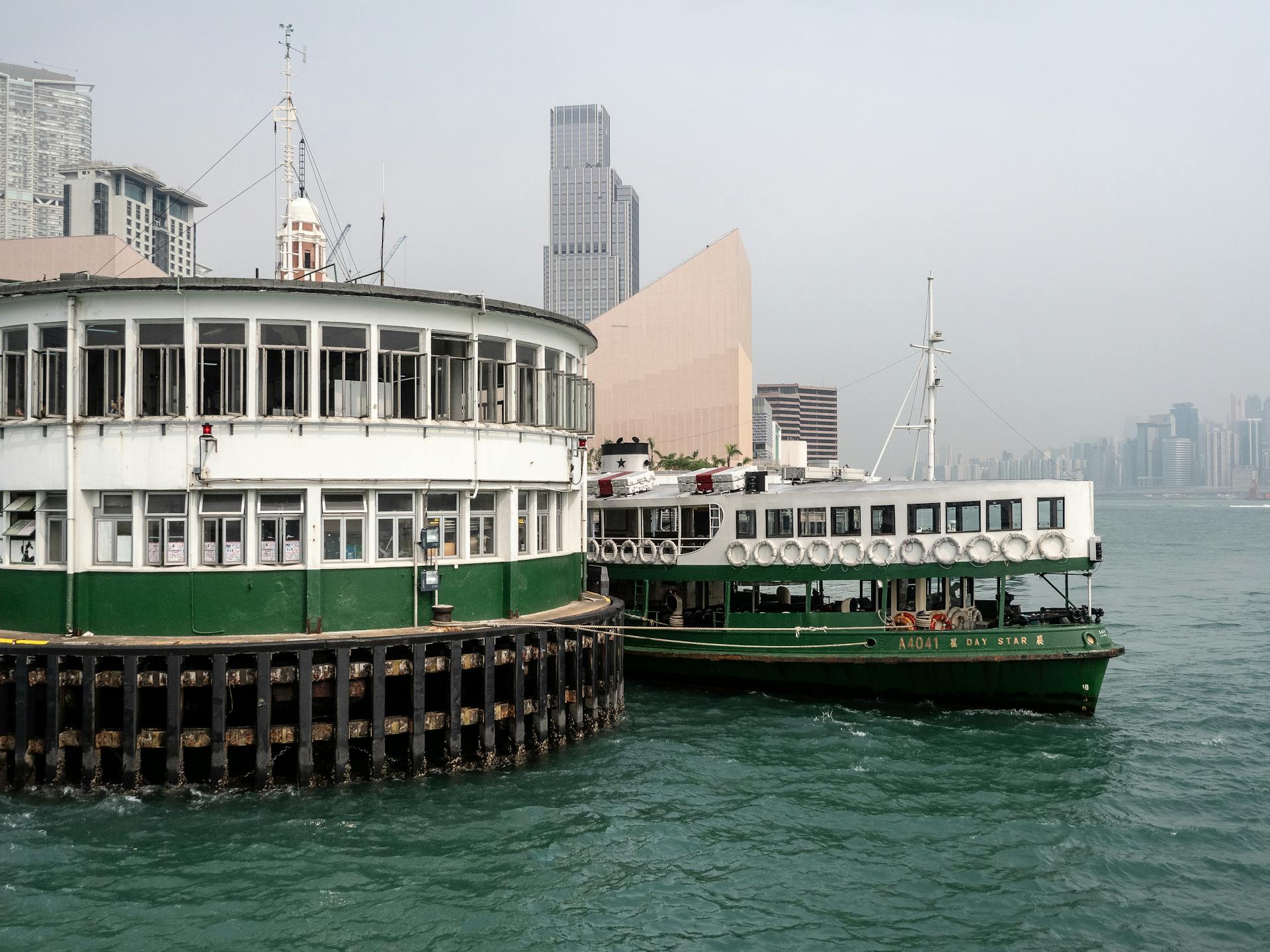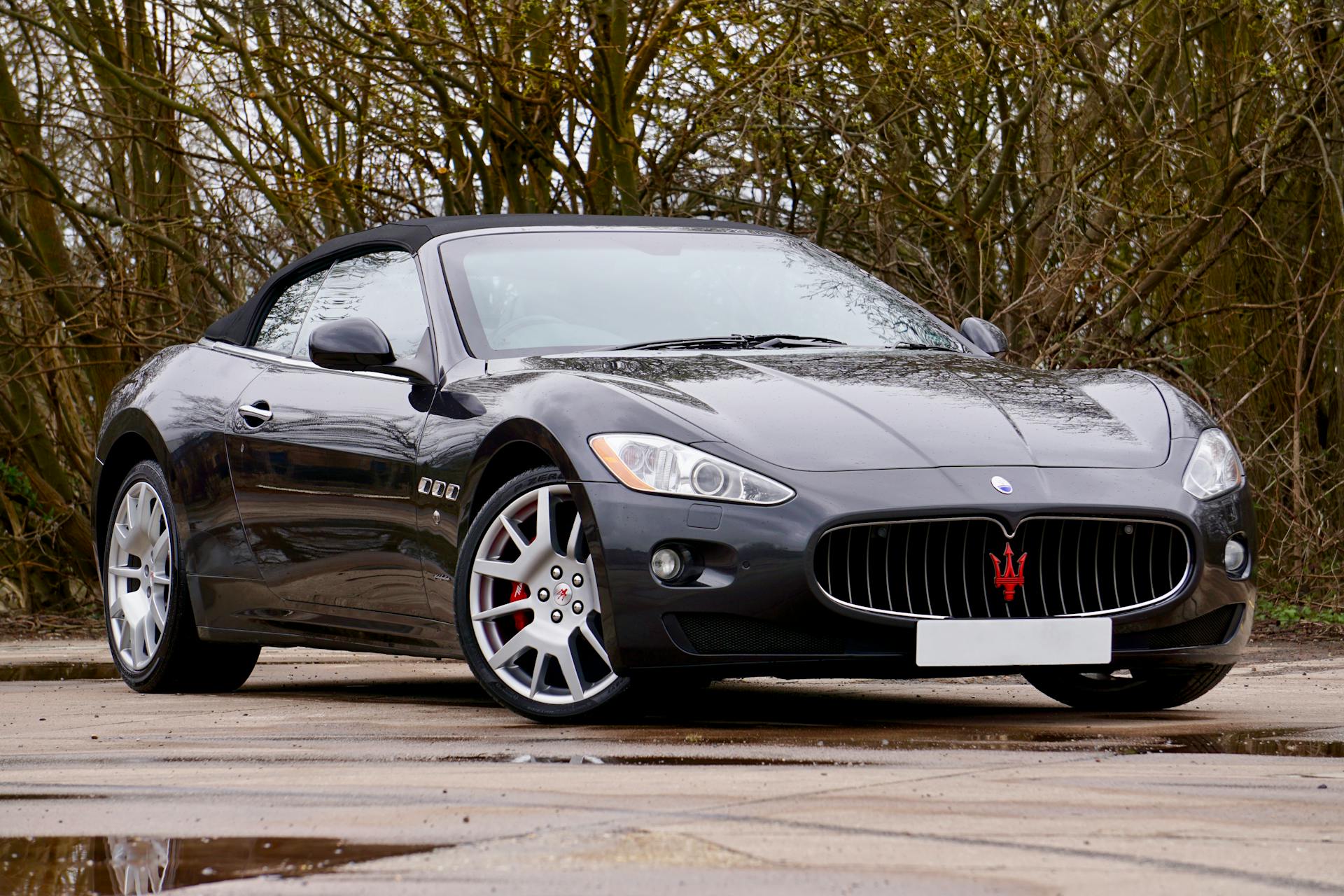
Automobile ferries are a convenient way to transport vehicles and passengers across bodies of water. They can travel to remote areas where roads are scarce or non-existent.
These vessels can carry a significant number of vehicles, with some ferries accommodating up to 1,000 cars. This makes them a popular choice for travelers who need to transport their vehicles.
The size of an automobile ferry can vary greatly, ranging from small vessels that can carry just a few cars to massive ships that can accommodate thousands of vehicles. Some ferries even have onboard amenities like restaurants, shops, and entertainment facilities.
Travelers can book tickets for themselves and their vehicles in advance, which can help ensure a smooth and hassle-free journey.
Safety Regulations
Safety Regulations are in place to ensure a smooth and secure experience for passengers and crew on an automobile ferry.
The International Maritime Organization (IMO) sets global standards for ferry safety, including requirements for life-saving appliances, fire protection, and navigation equipment.

Life jackets must be easily accessible and in good condition, with a minimum of one for every person on board.
Regular drills are conducted to prepare passengers and crew for emergency situations, such as evacuations and fires.
The ferry must be equipped with a fire alarm and a fire extinguishing system.
The crew must be trained in first aid and emergency procedures.
Passengers are required to follow safety instructions and stay away from emergency equipment.
Safety inspections are conducted regularly to ensure the ferry is in compliance with regulations.
Ferry Information
To travel by automobile ferry, you'll want to know the basics. The Love City Car Ferries operate between St. John and St. Thomas.
The ferry service offers two boats, the M/V Grand Vic and the M/V Capt Vic. The travel time between the islands is 30 minutes.
You can catch the ferry at the Enighed Pond terminal in St. John, also known as Theovald Eric Moorehead Dock and Terminal, or at the Urman Victor Fredericks Marine Terminal in Red Hook, St. Thomas.
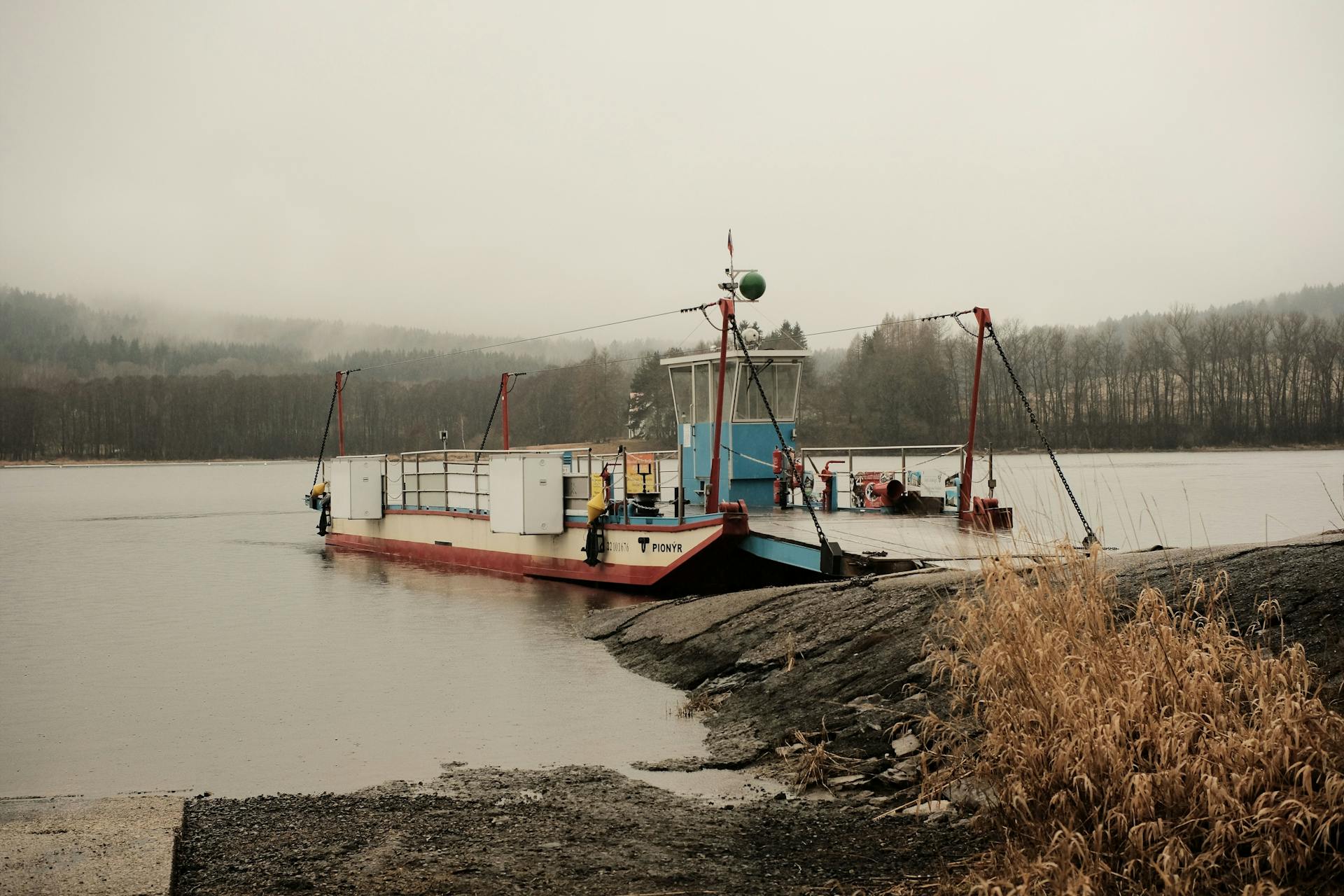
Here are the departure times from Enighed Pond to Red Hook:
Ticket prices vary depending on the type of ticket you purchase. A one-way ticket costs $50, while a round-trip ticket is $65. Resident seniors can get a discounted round-trip ticket for $60.
Check-in Times
When traveling by ferry, it's essential to know the check-in times to avoid any last-minute hassles.
Arrive in time to redeem your reservation, as check-in times vary by terminal and vehicle.
Review terminal and vehicle specific check-in times at your departure terminal to plan accordingly.
You can find your terminal now to get a head start on your travel plans.
If you don't have a reservation, make sure to review terminal specific ticket sales cut-off times at your departure terminal.
Finnmaid
The Finnmaid is a car ferry with a total lane meters for trailers of 4,220 lm, which is impressive for its size. It has a large deck space, with the main deck measuring 1,460 lm.
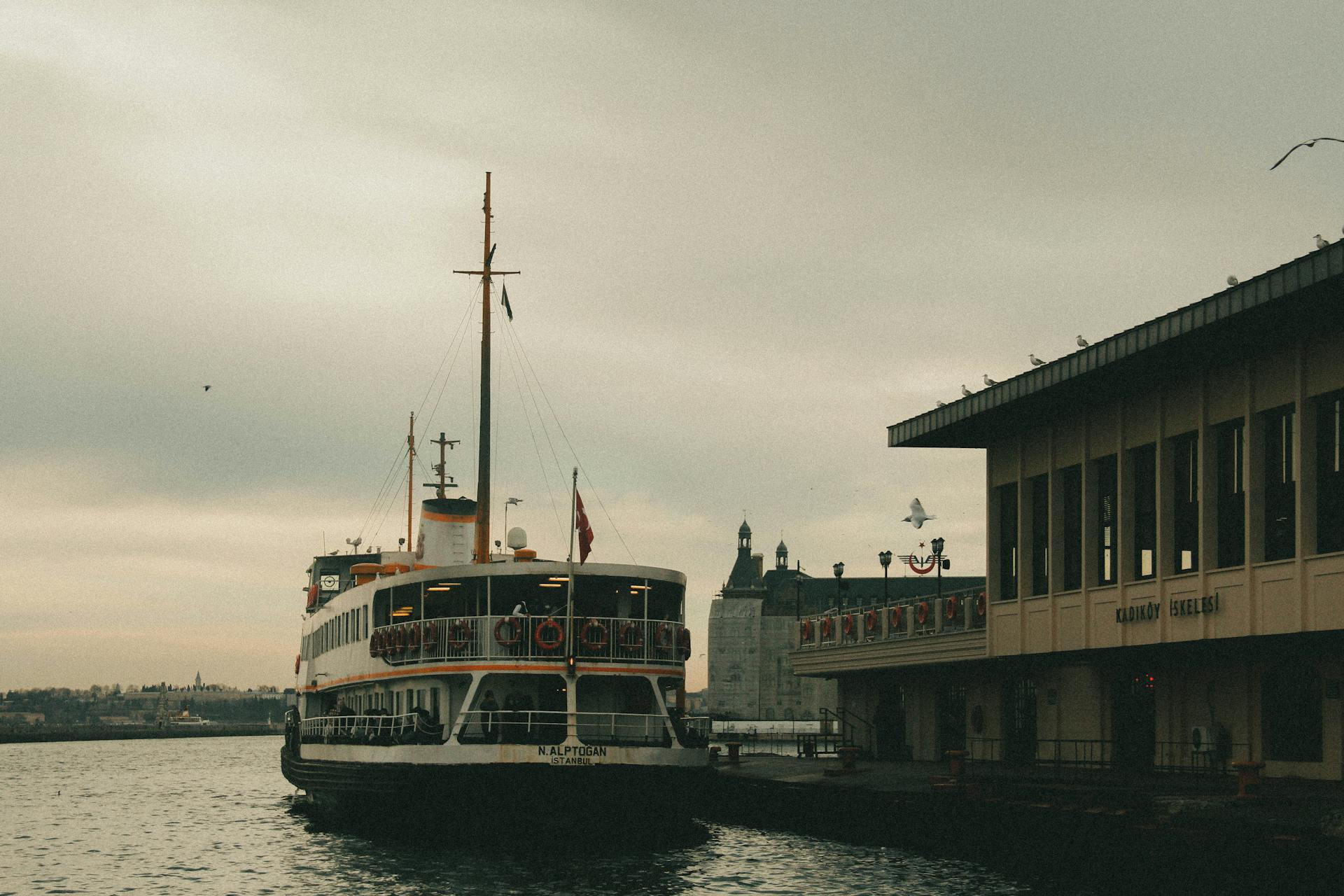
One of the notable features of the Finnmaid is its ice class, which is 1AS, making it suitable for navigating icy waters. This is a crucial factor for ferry operations in cold climates.
The Finnmaid has a significant capacity for additional cars, with 62 cars able to be accommodated on board. This is likely to be a welcome feature for ferry passengers who bring their vehicles with them.
Kyoto
Kyoto, a car ferry, boasts impressive dimensions. Its gross tonnage is a significant 15,025 t.
The ferry's length is substantial, measuring 195.0 m.
Remove
A ferry's size can be a big deal. The length of a car ferry can be as short as 162 meters.
To give you a better idea, let's look at some specific examples. The length of the car ferry is 162 meters, but it can also be 211.3 meters.
A ferry's width is also an important measurement. The width of a car ferry can be as narrow as 23.6 meters.
In some cases, a ferry's width can be as wide as 26 meters.
Travel Experience
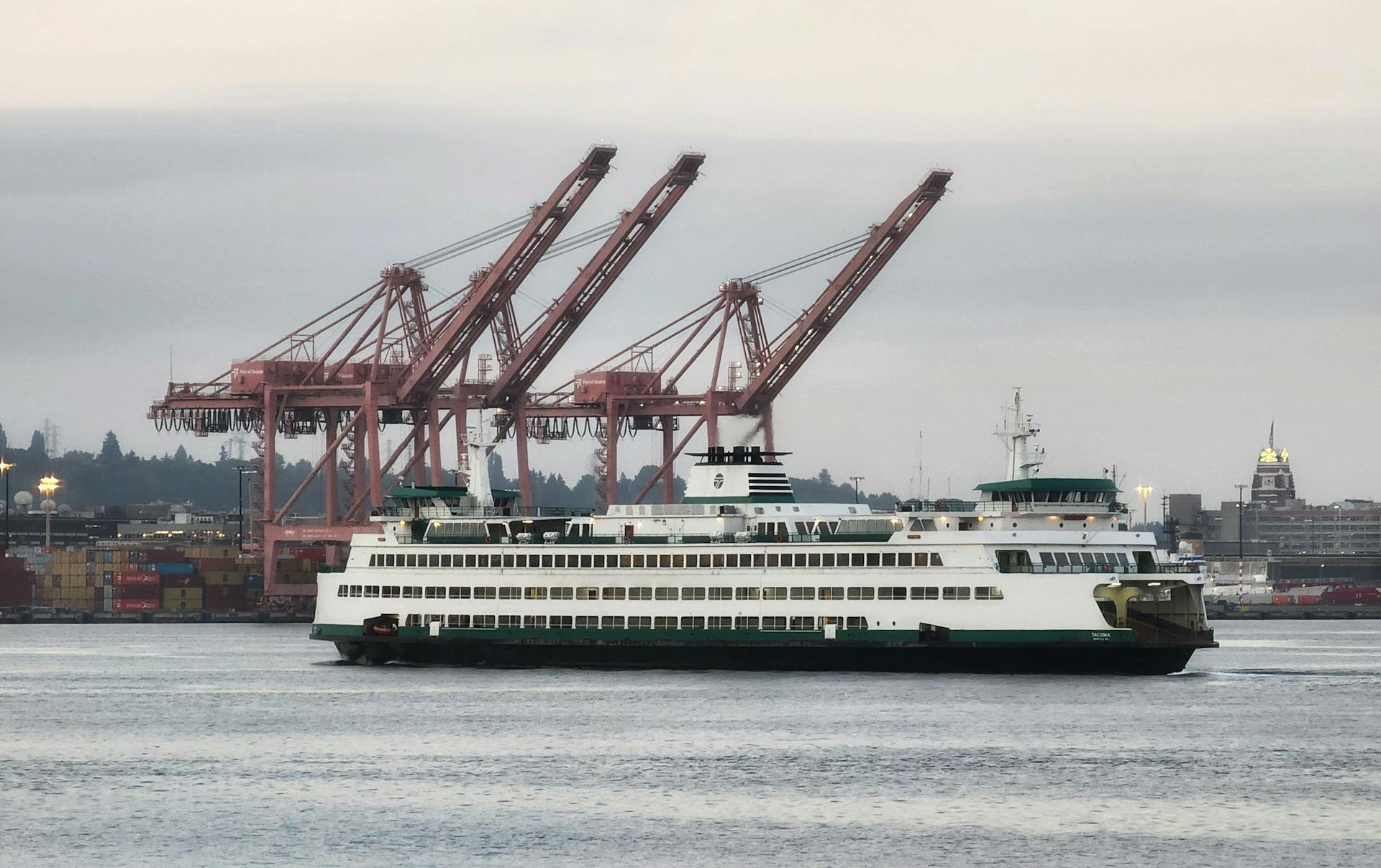
Dealing with minor inconveniences like long lines and crowded terminals is still better than driving through Chicago.
The views on an automobile ferry can be breathtaking, making up for any stress caused by delays or crowds.
Leaving your car at home can save you hundreds of dollars, as the vehicle fees on a ferry trip can be expensive.
Stressful Trip, Worthwhile Views
Traveling by ferry can be a great way to see the views, but it's not always stress-free. Dealing with minor inconveniences is part of the experience.
The views made up for the stress, but it's worth considering the costs of leaving your car at home. The vehicle fees on the ferry trip were an expensive part of the booking, accounting for less than half the trip's expenses.
Leaving your car at home can save you hundreds of dollars, which is a significant consideration.
What to Wear?
When traveling by car ferry, it's essential to dress appropriately to fully enjoy your crossing.
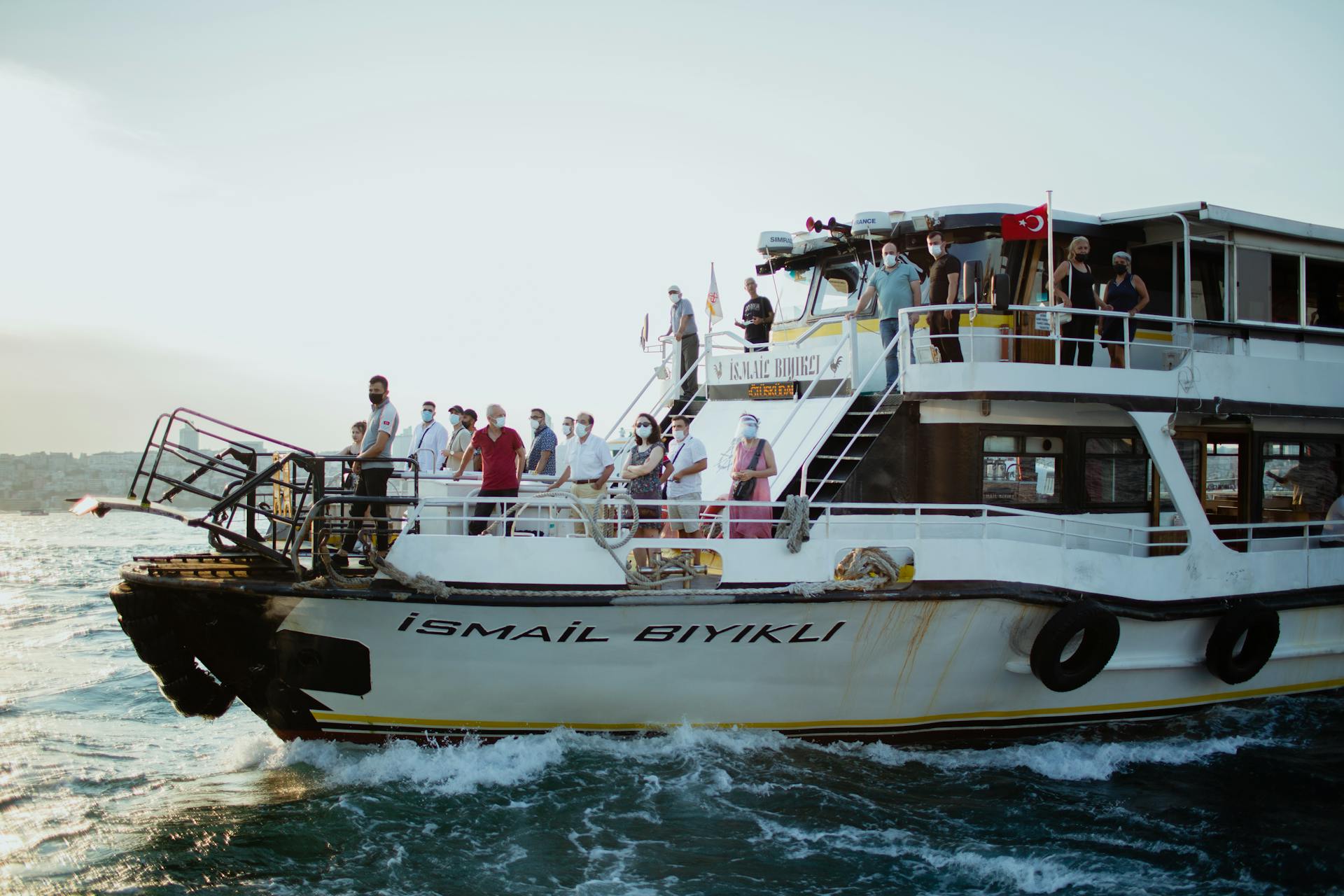
Always take a light windproof jacket with you, even in warm climates, as it can get windy on the ferry, even on calm seas.
Wearing shorts or trousers is a better choice than skirts or dresses, as they're more practical for windy conditions.
A hat is a good idea in case of strong wind or sunshine, as the reflections on the water can be intense.
Sunglasses are also essential to protect your eyes from the strong reflections on the open seas.
Wearing good, nonslippery shoes is paramount, as the decks can be wet and humid.
Can You Stay?
You can stay in your vehicle on a ferry, but it's not always allowed. Most large car ferries don't permit passengers to stay in their cars for safety reasons.
On smaller car ferries that service shorter crossings, you'll be allowed to stay in the car. These ferries usually have no roof on the parking deck and are completely open.
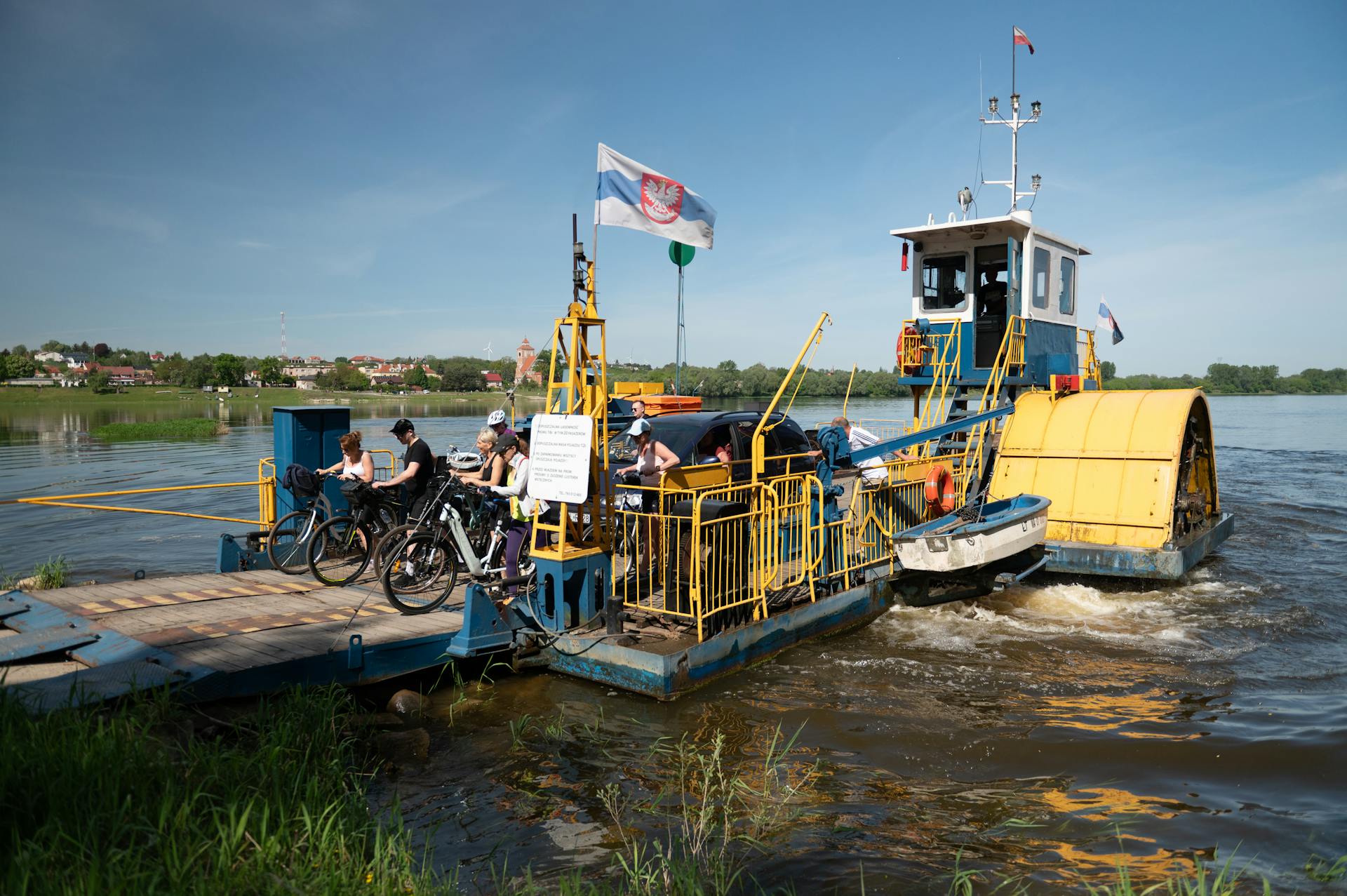
If your crossing is around 10 or 15 minutes, you'll often see people staying in their cars. It's a common practice on these shorter routes.
These smaller car ferries are often double-ended, meaning you don't need to turn your car to get out. They can embark and disembark vehicles from both the front and back.
Boarding Video
Before watching a car ferry boarding video, it's a good idea to check in advance what the procedures are for passengers with accessibility issues.
Larger and older car ferries can be a challenge, especially if they have several decks with no lifts or elevators available to reach the passenger deck from the parking deck.
Checking with the ferry company before booking a ticket is the best option, as they can advise you about disabled access, lifts, cabins, toilets, and other details specific to the ship you'll be sailing on.
Ferry Routes and Ships
Automobile ferries operate on several routes, including the busy route between the UK and France, which carries over 10 million passengers and 2.5 million vehicles per year.
The largest automobile ferry is the Color Hybrid, which measures 169 meters in length and has a capacity for over 1,300 passengers and 500 vehicles.
With multiple departures daily, ferry routes often cater to busy travelers who need to transport their vehicles with them.
Tysfjord

The Tysfjord ferry is a great example of a vessel that's well-suited for transporting vehicles across the water. It's owned by OVDS.
The Tysfjord has a impressive capacity, carrying 104 vehicles at a time. Its dimensions are substantial, measuring 160 meters in length and 27.1 meters in width.
The ferry's draft, or the depth of the hull below the waterline, is 6 meters. This allows it to navigate through relatively shallow waters.
Ro-Ro Diplomat
The Ro-Ro Diplomat was a ship that started its life as a ferry with a rather generic name. It was later renamed "Senator" just one year after being commissioned.
The Diplomat was almost structurally identical to another ro-ro ferry, suggesting that it was designed with efficiency and practicality in mind.
Diplomat's design allowed it to sail for decades, indicating its durability and reliability.
The Diplomat's exact dimensions and capacities are not provided in the available information.
Ro-Pax Ship Sitoe Diatta
The Ro-Pax ship Sitoe Diatta is a 76m ferry built by Fassmer for Senegal. It's designed to take local conditions into account and has extensive expertise in safety issues.
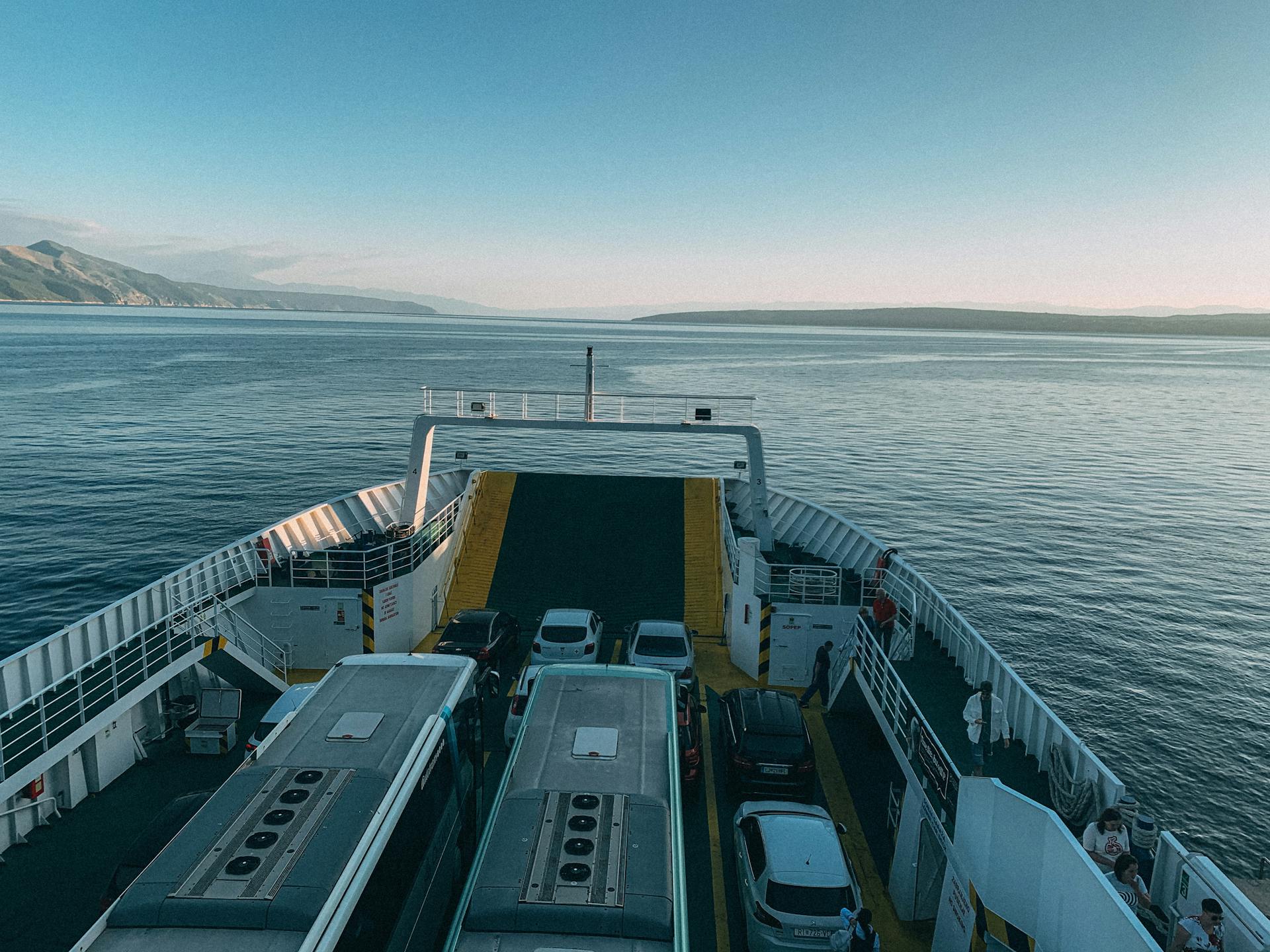
This ferry can carry 764 cars, making it a great option for transporting vehicles. The Sitoe Diatta is a type of ferry that links two ports in close proximity.
The Sitoe Diatta has a classification from Det Norske Veritas, which is a reputable organization in the maritime industry. This ensures that the ferry meets certain safety and quality standards.
In terms of emissions, the Sitoe Diatta has "scrubbers" installed to reduce its sulphurous emissions. This is a great feature for reducing the ferry's environmental impact.
Here are some key details about the Sitoe Diatta:
Steel Saturnus
Steel Saturnus is a steel car ferry operated by Trafikverket.
It runs on the line between Svanesund and Kolhättan on the west coast of Sweden.
High-Speed Aquastrada Tmv 70
The Aquastrada TMV 70 is a high-speed car ferry designed for transporting passengers and vehicles. It's a medium-size monohull fast ferry, built in steel with an aluminium superstructure.
This ferry is 70.9 meters long, making it a relatively compact vessel. Its draft is not specified in the available information.
The TMV 70 has a significant passenger capacity of 550 units, making it well-suited for busy routes. It can also carry a substantial amount of cargo, with a deadweight tonnage of 200,000 kilograms.
Volcan de Timanfaya
The Volcan de Timanfaya car ferry has a cargo capacity with cars and trailers that's impressive.
It has 2 + 1 car deck, which allows for efficient transportation of vehicles and cargo.
The ferry has a significant capacity for cars, with 404 vehicles able to be accommodated.
The cargo capacity is further broken down into lanes of different widths, with 1970 meters of lanes that are 2.10 meters wide, and 600 meters of lanes that are 3.00 meters wide.
Ferry Services
Ferry Services are a convenient way to travel with your car between St. John and St. Thomas in the US Virgin Islands. The Love City Car Ferries operate two barges, the M/V Grand Vic and the M/V Capt Vic.
The ferry travels from Enighed Pond on St. John to Red Hook on St. Thomas, taking approximately 30 minutes. You can catch the ferry at 6:15 AM, 8:00 AM, 10:00 AM, noon, 2:00 PM, 4:00 PM, or 6:15 PM from Enighed Pond.
The travel schedule from Enighed Pond to Red Hook is as follows:
You can choose from a one-way ticket for $50, a round trip ticket for $65, or a resident senior's round trip ticket for $60.
Vehicles We
We carry a variety of vehicles on our ferry, including standard vehicles like cars, vans, and SUVs. These vehicles can be loaded onto either the upper or lower vehicle deck, depending on availability.
If your vehicle is 7 ft. high or under, you're good to go. However, if items on top of your vehicle cause it to exceed 7 ft. in height, it may be considered oversized.
Oversized vehicles, which are those over 7 ft. high or 20 ft. long, will impact your fare and deck placement. You can find more information on over-height vehicle Saver fares here.
During sailing, you can only stay in your vehicle if you're on the upper vehicle deck due to Transport Canada regulations.
We also carry trailers, sidecars, and motorcycles with more than two wheels. These vehicles will board with standard vehicles.
Motorcycle riders, be sure to ride slowly when loading or unloading. It's also a good idea to park diagonally to the ferry's centre line and leave in a low gear.
To secure your motorcycle, use a side stand and wooden blocks (available on our vehicle decks). Don't forget to bring tie-downs for North coast sailings.
If you have a heavy vehicle, don't worry – we can handle it. We carry vehicles with a Registered Gross Vehicle Weight (GVW) over 5,500 kg (12,100 lbs.).
Here's a quick rundown of our vehicle categories:
Love City Ferries
Love City Ferries offer a convenient way to travel between St. John and St. Thomas, with two ferries, the M/V Grand Vic and M/V Capt Vic, operating from the Enighed Pond dock in St. John to the Red Hook Car Barge Dock in St. Thomas.

The travel time between the two islands is approximately 30 minutes. You can catch the ferry at 6:15 AM, 8:00 AM, 10:00 AM, noon, 2:00 PM, or 4:00 PM from Enighed Pond, with departures from Red Hook at 6:30 AM, 8:30 AM, 10:30 AM, 12:30 PM, 2:30 PM, and 4:30 PM.
One-way fares are $50, while round-trip fares are $65. Resident seniors can take advantage of a discounted round-trip fare of $60.
Sources
- https://www.bcferries.com/travel-boarding/travel-vehicle-car-truck
- https://www.businessinsider.com/ferry-with-car-across-lake-michigan-mostly-worth-it-2024-10
- https://ferryspots.com/car-ferry-travel-tips/
- https://www.nauticexpo.com/boat-manufacturer/car-ferry-20408.html
- https://www.vinow.com/travel/virgin-islands-ferry-schedules/stjohnbarge/
Featured Images: pexels.com
